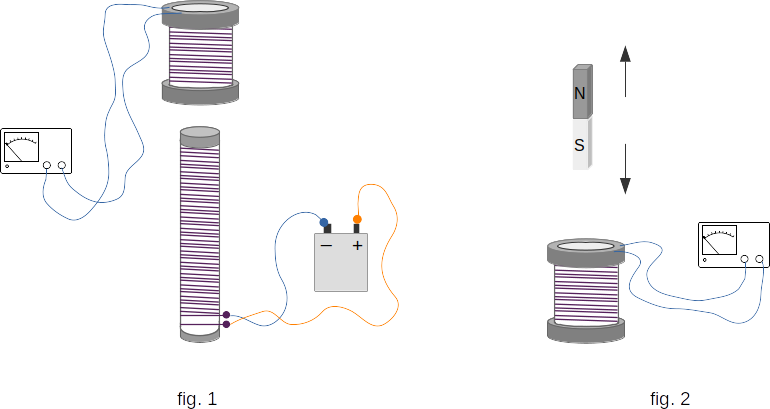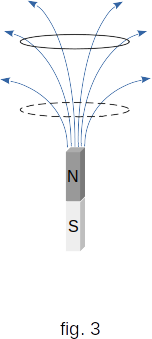From the Electromagnetic induction
130. Opening of electromagnetic induction
So far we have studied electrical and magnetic fields that do not change over time. It was found that the electric field is created by electric charges and the magnetic field by moving charges, i.e. electric current. Let us now turn to the fields, the magnitude of which changes over time.
The most important fact that has been discovered is the close relationship between an electric field and a magnetic field. A magnetic field that changes over time can produce an electric field, while an electric field can produce a magnetic field. Without this relationship between fields, the variety of electromagnetic forces would not be as extensive as it is in fact. There would be no radio waves or light.
It is no coincidence that the first decisive step in discovering new properties of electromagnetic interactions was made by Faraday, the founder of ideas about the electromagnetic field. Faraday was completely convinced of the unified nature of electrical and magnetic phenomena. Electric current, he argued, is capable of magnetizing a piece of iron. Couldn't a magnet, in turn, cause an electric current? It hasn't been detected for a long time. It was difficult to understand the main thing, only a moving magnet or a magnetic field changing over time can excite an electric current in the coil.
The discovery of electromagnetic induction was made on 29 August 1831. It is a rare occurrence that the date of a new remarkable discovery is known so accurately. Here is a brief description of the first experience given by Faraday himself.
"10. Two hundred and three feet of copper wire in one length were coiled round a large block of wood; other two hundred and three feet of similar wire were interposed as a spiral between the turns of the first coil, and metallic contact everywhere prevented by twine. One of these helices was connected with a galvanometer, and the other with a battery of one hundred pairs of plates four inches square, with double coppers, and well charged. When the contact was made, there was a sudden and very slight effect at the galvanometer, and there was also a similar slight effect when the contact with the battery was broken. But whilst the voltaic current was continuing to pass through the one helix, no galvanometrical appearances nor any effect like induction upon the other helix could be perceived, although the active power of the battery was proved to be great, by its heating the whole of its own helix, and by the brilliancy of the discharge when made through charcoal" (M. Faraday. Experimental Researches in Electricity. First Series).
So, originally the induction was discovered in fixed relatively each other conductors (a prototype of a modern transformer). Then, clearly understanding that the moving up and down of conductors with current should lead to the same result, as the closing and opening of the circuit, Faraday with the help of experiments proved that the current occurs when the coils move relative to each other (fig. 1). Familiar with the works of the Ampere, Faraday also understood that a current is a magnet and a magnet in turn is a set of currents. On October 17, as recorded in his laboratory journal, an inductive current was detected in the coil at the moment the magnet was moved in (or out) (fig. 2). Within one month, Faraday experimentally discovered all significant features of the electromagnetic induction phenomenon.

At present, Faraday's experiments can be repeated by anyone. This requires two coils, a magnet, a battery and a sufficiently sensitive galvanometer.
Faraday has caught the general idea of what the induction current depends on in experiments that look different from the outside.
In a closed conductive circuit, an electric current occurs when the number of magnetic induction lines, penetrating the area limited by this circuit, changes. And the faster the number of magnetic induction lines changes, the more current is generated. The reason for the change in the number of magnetic induction lines is completely indifferent. This can be a change in the value of the magnetic induction because of a change in the electric current in the neighbour coil, or a change in the magnetic induction because of the movement of the coil in an heterogeneous magnetic field (fig. 3).
